चित्र में एक संशोधित बायसित परिपथ दर्शाया गया है जहाँ आधार प्रतिरोध RB , बैटरी VCC के साथ जोड़ने की बजाए संग्राहक से जोड़ा गया है। (a) IB को (i) VCC और (ii) VCE और VBE के पदों में व्यक्त करें। (b) VCE का मान निकालें।
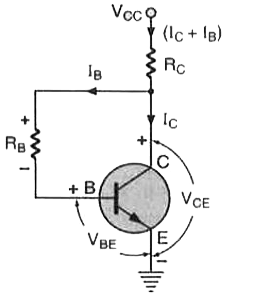
The correct Answer is:(a) (i) IB=(VCC−ICRC)−VBERC+RB
(ii) (VCE−VBE)(RC+RB)
(b) VCE=VCC−(IC+IB)RC
VCC=RC(IC+IB)+IBRB+VBE
=RCIC+(RC+RB)IB+VBE
या IB+(VCC−ICRC)−VBE(RC+RB)
VCE=VCC−(IC+IB)RC≈(VCC−ICRC)
इस प्रकार IB=(VCE−VBE)(RC+RB)
Topper's Solved these Questions
Similar Questions
(a) परिपथ चित्र की सहायता से संक्षेप में व्याख्या करें कि
(i) अग्रदिशिक बायसन और (ii) प्रश्चदिशिक बायसन में p-n संधि डायोड के V-I अभिलाक्षणिक कैसे प्राप्त किये जाते हैं। प्राप्त किए गए वक्रों का आकार बताएँ।
(b) 2.8 eV बैंड अंतराल वाले एक अर्धचालक से एक फ़ोटोडायोड बनाया जाता है। क्या यह 6000 nm का तरंगदैध्य्र संसूचित कर सकता है ? इसका औचित्य बताएँ।07:05View Solution6 cm व्यास और 1.5 अपवर्तनांक वाले गोले में एक छोटा वायु का बुलबुला फँसा है | व्यास के अनुदिश देखने पर बुलबुला, गोले के 1 cm अन्दर प्रतीत होता है | बुलबुले की वास्तविक स्थिति निकालें |
04:07View SolutionIn the system is in steady state. Then
a. VA−VB=_______
b. VB−VC=______
c. VD−Ve=______
d. The energy stored in the circuit is "________"
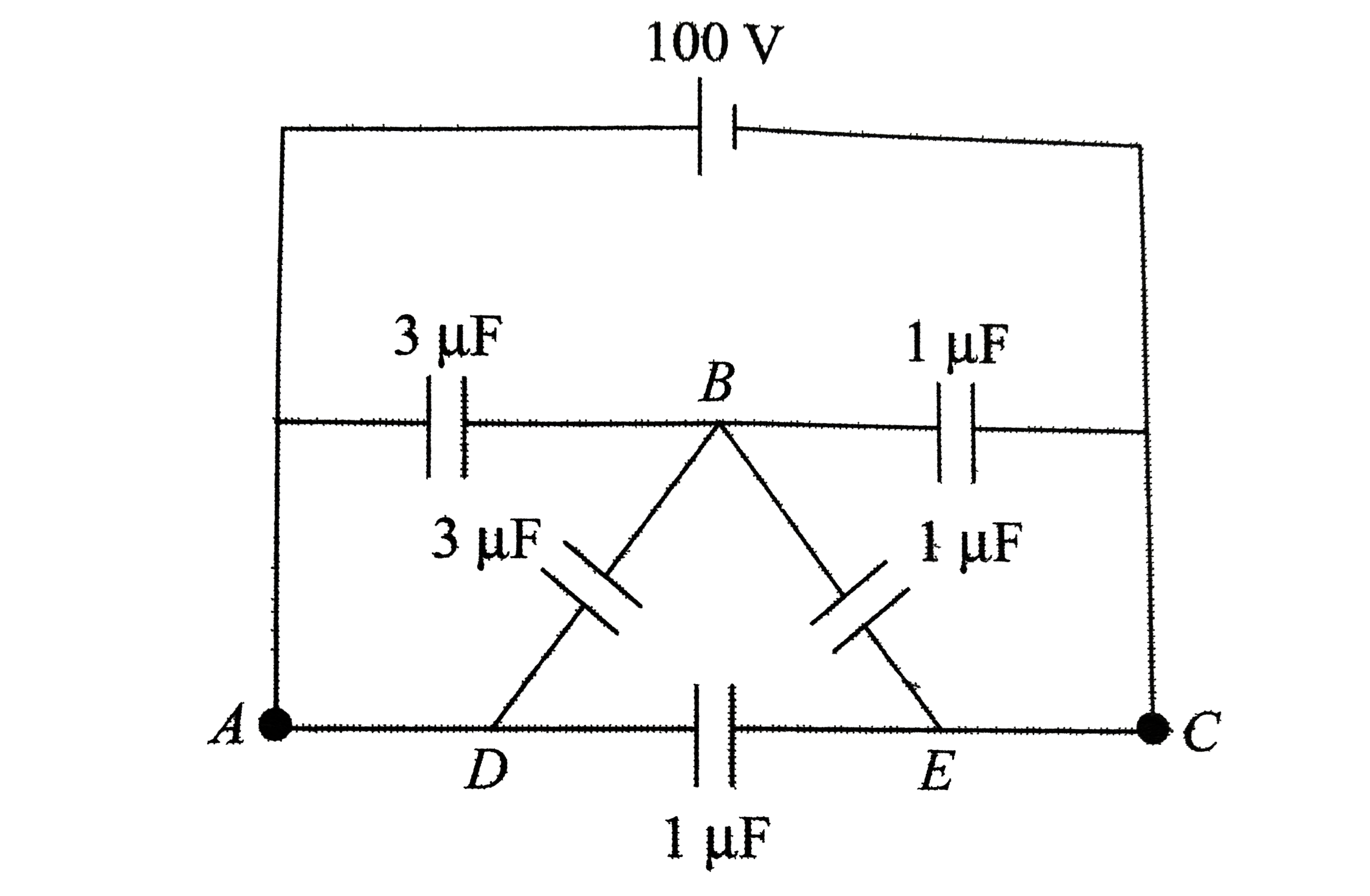 .07:10View Solution
.07:10View SolutionIn the circuit shown in the figure, the input voltage Vi is 20V,VBE=0 and VCE=0. The values of IB,IC and β are given by:
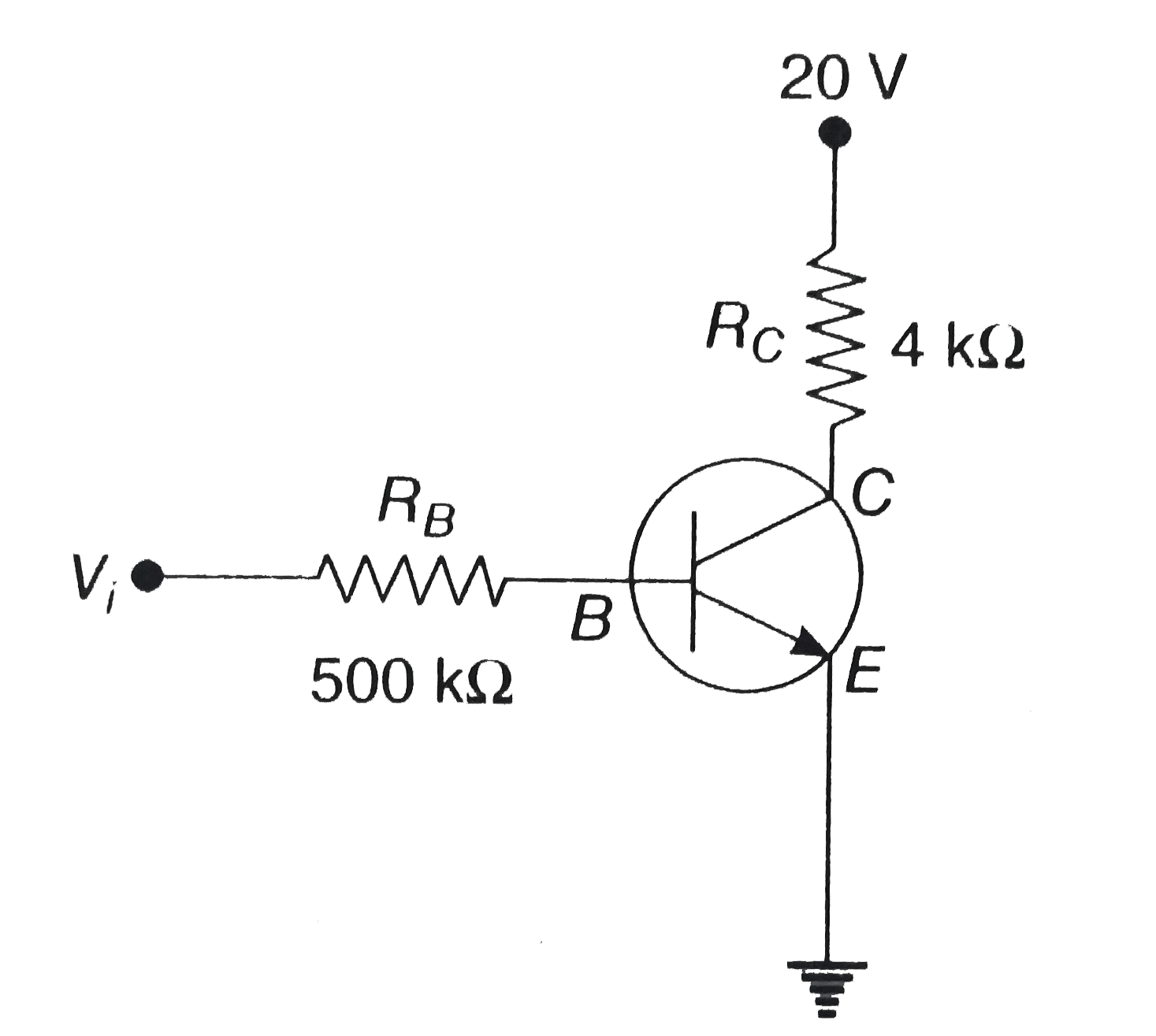 02:35View Solution
02:35View SolutionFor the transistor circuit shown in figure , evaluate VE,RBandRE. Given IC=1mA,
VCE=3V,VBE=0.5V,VC=12Vandβ=1000
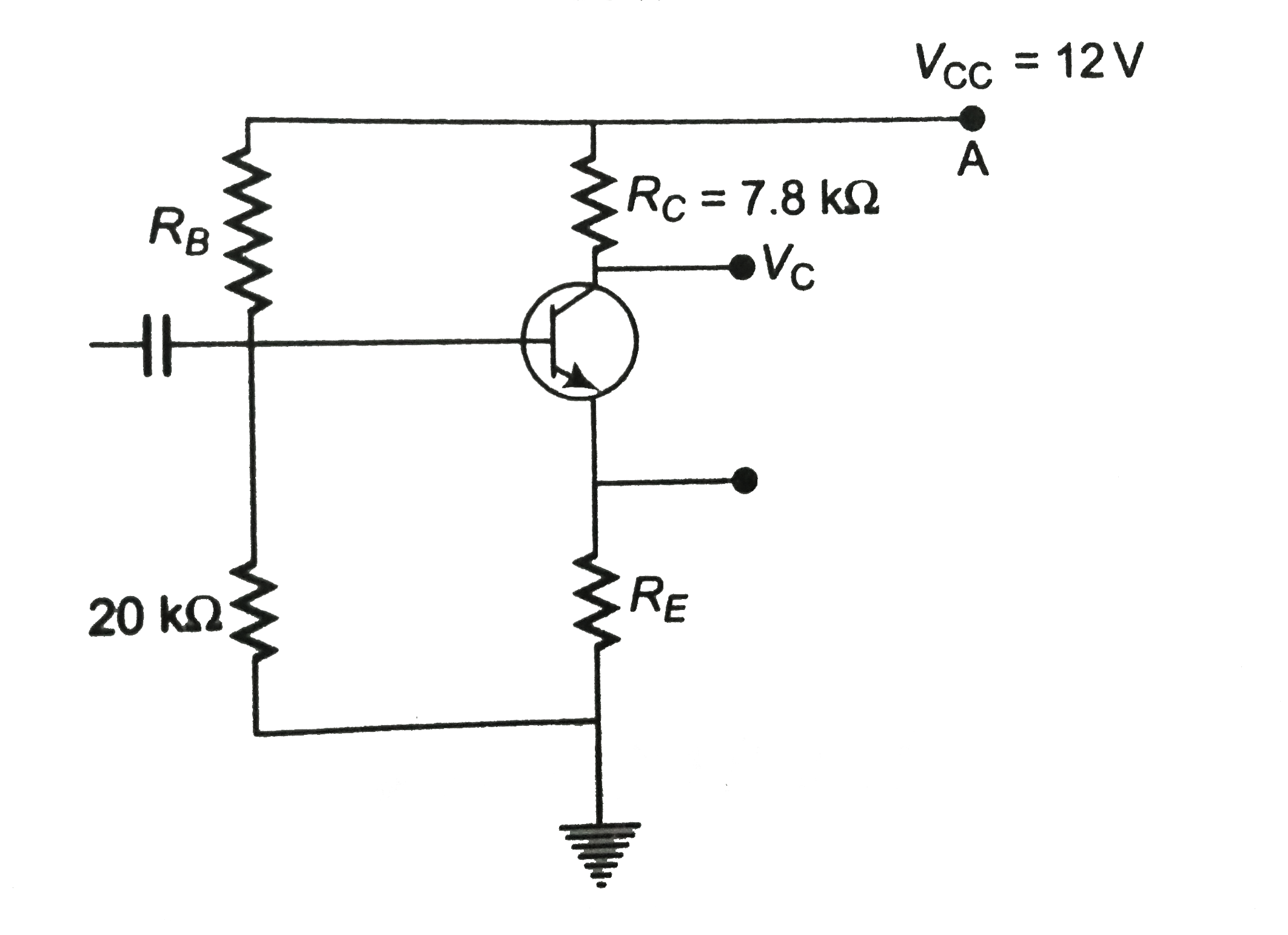 03:34View Solution
03:34View SolutionIn the circuit shown in the figure, the input voltage V_(i) is 20V, V_(BE)=0 and V_(CE) = 0 . The values of I_(B) , I_(C) and beta are given by
04:28View SolutionFind out following (i) V_(A)-V_(B) (ii) V_(B)-V_(C) (iii) V_(C)-V_(A) (iv) V_(D)-V_(C) (v) V_(A)-V_(D) (vi) Arrange the order of potential for points A, B, C and D.
05:59View Solutionचित्र में, q=+1.0 माइक्रोकुलोम हो तो ज्ञात कीजिये-
(i) VA−VC,VB−VC or VA−VB
(ii) 10−10 कुलोम आवेश को A से C तक ले जाने में कृत कार्य।
 View Solution
View Solutionसंलग्न चित्र में एकसमान वैघुत क्षेत्र E=10 वोल्ट/मीटर दर्शाया गया है। ज्ञात कीजिये-
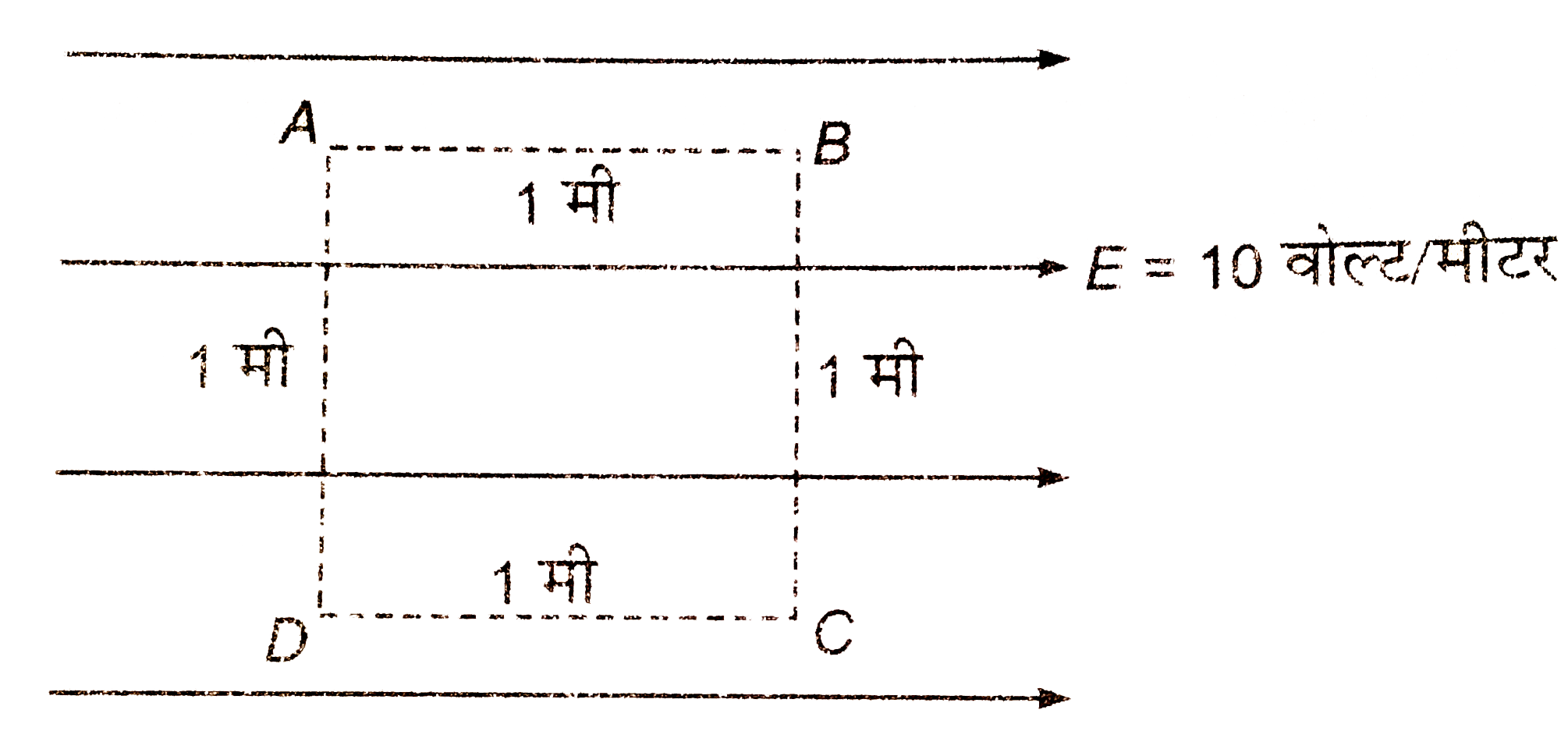
(i) VA−VB, (ii) VA−VC, (iii) VA−VC, (iv) VB−VC , (v) VB−VD07:35View SolutionIn Fig 27-50,ε=24.0V,R1=2000Ω,R2=3000ΩandR3=4000Ω. What are the potential differences (a) VA−VB (b) VB−VC (c) VC−VDand(d)VA−VC?
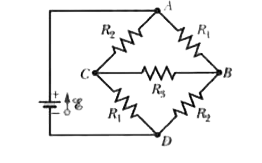 02:50View Solution
02:50View SolutionVA,VB,VC, ज्ञात कीजिए तथा यदि VA=VC हो तो आवश्यक शर्त क्या होगी।
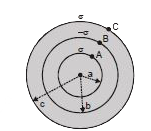 09:16View Solution
09:16View SolutionIn uniform electric field, E=10NC−1 as shown in figure, find
(i) VA−VB
(ii) VB−VC.06:13View SolutionIn the system is in steady state. Then a. V_(A)-V_(B)="_______" b. V_(B)-V_(C)="______" c. V_(D)-V_(e)="______" d. The energy stored in the circuit is "________" .
01:54View SolutionIn the above circuit, I_(C) =1.5 mA and beta = 100.Find I_(B) , V_(CE) and V_(BE)
03:52View SolutionIf the above question, the potential has correct relations as given=
A. VA>VB>VC>VD
B. VA>VB≥VC>VD
C. VD=VC=VB=VA
D. VC<VB>VA>VD05:31View Solution

